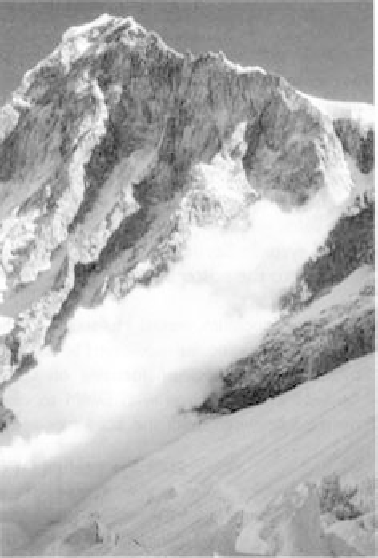Geoscience Reference
In-Depth Information
a multitude of solid grains behave like a fluid? The answer
is that flowing fluid behavior only occurs once a critical
limit to stability has been exceeded and that it only ends
once another limit is reached. The initial condition, a ver-
tical wall of grains, was evidently in excess of the stability
limit. The final conditions, defining a conical pile of grains
with slopes resting at a certain average angle to the local
horizontal surface, were within the limit.
In order to explain these phenomena we return to
Reynolds' packing modes (Fig. 4.58). Any shear of a
natural aggregate of grains (
C
0.74) must involve the
expansion of the volume as a whole. Take the case of an
array of spheres in perfect rhombohedral packing. These
must be sheared and raisedup by a small average distance,
d
, over their lower neighbors before they can shear
and/or slide off as a flowing mass; the grain mass suffers an
Fig. 4.61
An initial random mix of
Riojanas
beans and
Valencia
rice in a glass container is shaken at 3 Hz for 20 s. All the beans rise, magically,
to the surface. Physicists use such behavior to shed light on the properties of granular fluids as analogs for the kinetic theory of gases and
solids.
Fig. 4.62
Natural snow avalanches are a major hazard in mountain ski resorts. Any inclined pack of snow layers contains weak granular or
refrozen horizons which are easily disturbed by ground or air vibrations. Low friction means gravity collapse can occur and the snow pack
disintegrates into a granular flow whose equilibrium velocity may exceed 20 m s
1
.













Search WWH ::

Custom Search